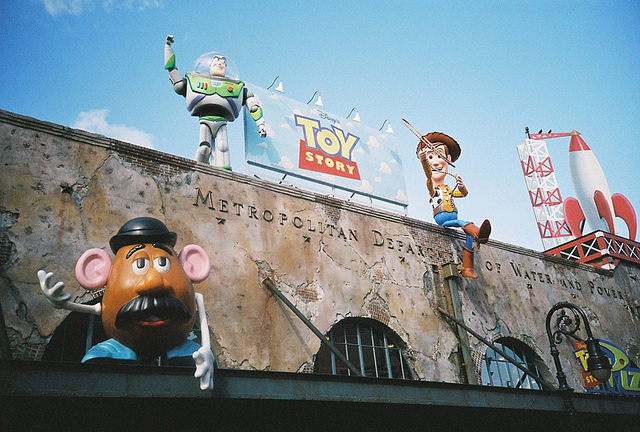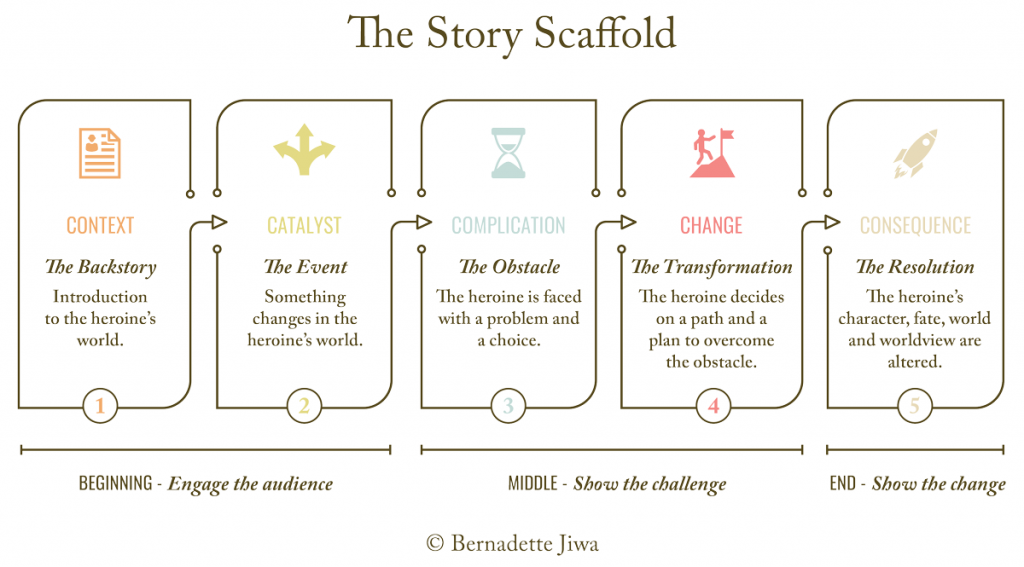Unlock the Magic in Your Story Now
Get the Free 20 questions to Ask Before Launching Your Idea workbook when you sign up for occasional updates.
Get the Free 20 questions to Ask Before Launching Your Idea workbook when you sign up for occasional updates.
How To Tell A Story Using The Story Scaffold
filed in Marketing, Story Skills, Storytelling

There’s no question that stories are the best way to engage and persuade people. We have good scientific evidence to prove it. According to neuroeconomist, Professor Paul Zak, ‘Narratives that cause us to pay attention and also involve us emotionally are the stories that move us to action.’ It’s our very makeup, our physiology, that enables us to empathise and to be persuaded by stories. This physiological connection between head and heart is the reason stories work.
Zak goes on to say, ‘Stories that are personal and emotionally compelling engage more of the brain, and thus are better remembered than simply stating a set of facts.’ All compelling stories follow a simple three-act structure, with a beginning, where the scene is set. A middle where something happens. And an ending where we find out what happens as a result of what happened. The sequence of events—what we reveal to the audience, when, is what makes stories work. The goal is to keep the audience wondering what’s going to happen next all the way to the end. When you can’t put a book down, it’s because the author nailed the story structure. The author’s goal is to keep you turning the pages.
Philosophers and scholars like Aristotle, Freytag and Campbell, analysed dramatic structure and gave us story formulas like the hero’s journey to help us become better storytellers. Every successful movie follows these formulas. But they are overly complex for stories we tell every day.
At its simplest, the sequence of events in a story happens in five stages.

The 5C’s of The Story Scaffold
1. CONTEXT
The Backstory
Introduction to the hero’s or heroine’s world.
2. CATALYST
The Event
Something changes in the hero’s or heroine’s world.
3. COMPLICATION
The Obstacle
The hero or heroine is faced with a problem and a choice.
4. CHANGE
The Transformation
The hero or heroine decides on a path and a plan to overcome the obstacle.
5. CONSEQUENCE
The Resolution
The hero’s or heroine’s character, fate, world and worldview are altered.
You can test this structure by mapping it onto any memorable story from Cinderella to Toy Story. Think about what happens in Toy Story when Woody, Andy’s favourite toy is confronted with the arrival of Buzz Lightyear and how he changes throughout the story as a result.
You can use The Story Scaffold to become a better storyteller, not only when you’re marketing but in everyday conversations. Sometimes you will be the hero of the story. But more often when you write persuasive sales and marketing copy, pitch a winning presentation or create great customer experiences, it’s the customer’s or client’s story you’re telling.
Storytelling isn’t just the best way to be seen and heard in a meeting or on a stage. It’s how we engage with people every day by showing that we see them.
If you’d like to practice using The Story Scaffold to tell better stories, consider The Story Skills Workshop.
Image by Carmelody